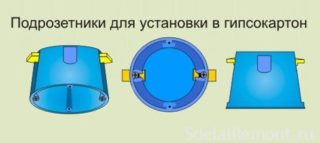When the socket becomes unusable or you need to put it in a new place, you need to grind the groove for the socket. The box for installing sockets and switches for hidden wiring allows you to securely fix the mechanism and safely "hide" in depth. It is important to install such protection in wooden houses - a local fuse is created against fires during a circuit or a fault.
Design features

The socket box for electricians is called a "glass" because of its characteristic shape. Products are made for different purposes, devices and walls, therefore they have several design options. For example, if you want to install a power point or switch in a plaster wall, use a glass with "paws", which are pressed against the surface.
Plastic and metal are used as material, they do not differ in shape and appearance, but the latter are more durable and durable. Installation in aerated concrete, brick, foam blocks and concrete is allowed. Simple items are secured inside the pocket with diluted alabaster.
The socket boxes are distinguished by the installation method:
- overhead - suitable for sockets near skirting boards or other protruding elements;
- hidden - classic boxes baud socket (with "ears" and without them).
The outer shape can be round, square, oval, rectangular. The former are used more often. If you need to accommodate a large mechanism or a lot of wires, a square product will do. Oval ones are placed if two devices need to be placed side by side, for example, an outlet and a switch.
According to the depth of the products, depending on the type of mechanism, they choose the classic version, in-depth or narrow. In some cases, non-standard socket outlets are used as a frame for a junction box.
Standard sizes of products
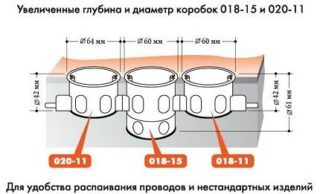
The dimensions of the boxes differ and depend on the manufacturers and the purpose. Glasses with a diameter of 4.5 cm and a depth of 6.8 cm are common, taking into account the walls of the product inside it turns out to be 6.5 cm by 4 cm. Narrow models have a depth of 2.5 cm, and deep ones - 6.5 and more. Such standards are used by IEK - high-quality and widespread electrical goods.
There are no standards for square and oval socket boxes. The most common sizes are 7.0x7.0 cm, 6.0x6.0 cm. Therefore, when buying, it is advised to take spare. If one type of equipment is used during the repair, the result is safer and more thoughtful.
Choosing a box for sockets and switches
Electricians advise to purchase sockets and boxes at the same time, so that it is possible to immediately compare the dimensions and technical compatibility of products.
Installation in drywall
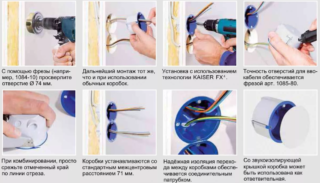
Plasterboard walls and partitions are increasingly used for repairs. Lightweight, comfortable material has its own characteristics. Therefore, to install access points to the power grid, it is necessary to take special installation boxes for sockets in drywall.To select a location, standard rules and requirements (GOSTs) are used - the absence of heat and humidity sources in the immediate vicinity, a height suitable for users.
Before direct installation, the marking is carried out in accordance with a previously prepared plan. The hole for the box for sockets and switches can be cut with a hacksaw, a strong knife. Difficulties arise with cutting round grooves - to make sufficiently smooth edges, they use an electric saw with a round nozzle (milling cutter).
The socket box is installed inside the slot, secured with screws. The optimal distance between the centers of adjacent socket boxes is 7.1 cm for classic glasses.
A feature of the installation is the need for additional thickening of the piece of the wall where the device will be located. Usually, a small layer of the material from which the walls are used is used.
Drywall is fragile and thin enough, if the outlet is not reinforced, there is a high probability of breakage. For example, a tightly fitting fork will pull the entire mechanism with it.
Installation in a wooden wall
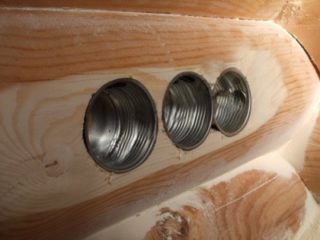
First of all, the installation of a box for sockets and switches depends on the type of wiring in the house: open - outside, on top of the walls; hidden - in the grooves after chasing. The latter is an expensive and time-consuming method, it is rarely used: in addition to financial costs, an accurate calculation of the wiring plan is required, professional electricians - mistakes are unacceptable.
For wooden walls, you cannot use plastic boxes for sockets - only metal ones. In some cases, a special non-flammable plastic is acceptable (it is rare, expensive). The socket box performs a protective role if a short circuit, sparks, ignition occurs.
Installation work does not differ from installation in walls made of other materials. For the hole, take a separate crown for the tree. It has a different structure, type of tie-in. Fix the flush-mounted installation box with screws. Alabaster or other mixtures are not required.
Installing a new socket box in place of the old one
Most of the buildings were built during the Soviet era. The standards for conducting electrical wiring were different, the devices too. Soviet boxes for switches and sockets are larger than modern ones, they are poorly attached and move inside - the legs and ears do not fix properly.
The order of work
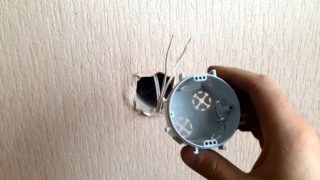
When working with old boxes for installing sockets, you should adhere to the general rules and principles of working with electrical networks: de-energizing, using rubber gloves, and the like. Stages of work:
- De-energize the site by turning off the machines on the house panel.
- Check the actual power supply - try turning on a lamp or other device.
- Remove outdated or broken outlet: remove the cover, unscrew the fasteners.
- Separate the terminals from the "unnecessary" socket.
- Assess the appearance and tightness of the socket box.
- If the glass is in order, the new mechanism is secured with self-tapping screws for stability.
- If the box is in a faulty condition, remove, fix a new one.
When working with nails and screws, you must carefully monitor the wires so as not to touch or damage. Electricians advise blunting or shortening sharp ends.
Assembly of the glass block
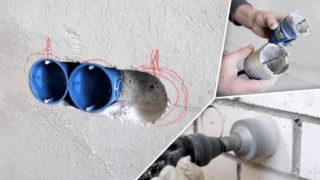
To install several socket boxes next to each other (block), it is necessary to use a special marking and a drill with a nozzle, 8 cm in diameter. The protruding ends of the wires are de-energized, assembled into a bundle (twisted, fixed with a wire), bent to the left. On the right, the markup is applied - more often they use a simple pencil. It is important to consider the location - the cables must be routed into the box from an angle in a diagonal direction.
There are two types of blocks:
- Ready - purchased assembled, boxes for switches and sockets are precisely dimensioned for marking.
- Typesetting - it is prepared from several separate socket boxes, requires accurate calculation of the distance between the centers of the glasses A drawing with dimensions is drawn up in advance, a level is used for marking.
The block of sockets and switches should be precisely aligned - the length of the product will show even a slight deviation, it will be difficult to correct the situation. For classic boxes, the optimum center-to-center distance is 71 mm. For individual sizes, preliminary calculations and a plan are required.
A drill with a nozzle suitable for the wall material creates holes of a suitable depth. The partitions between them are hollowed out (for example, with a chisel). Wires are being tried on. If everything is correct, proceed to direct installation and connection.
Installing a glass for an outlet or switch is easy. It is important to consider the type of wall material, thickness, size of devices and their compatibility. When working with non-standard walls - tiles, tiles, the like - the depth minus the thickness of the top coating is additionally calculated. If you take into account the nuances, study the descriptions and requirements, turn off the power to the work areas in time, you can not worry about safety and install boxes in any quantities.

